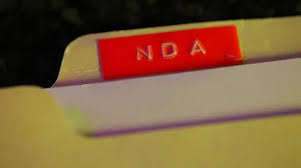So, imagine you’re scheduled to give a presentation somewhere in Asia that you’ve never been before. In fact, it’s the first time you’ve ever been anywhere in Asia at all. Anyway, further imagine it’s an international business conference and you’re scheduled to give a 15-minute presentation on a stage in front of a large multi-lingual audience. Imagine it’s also your first time attending this particular event and that you’re not familiar with either the composition of the attendees or the flow of presentation, but that you want to make a good impression. Here are some simple guidelines for making more effective business presentations that too many people often overlook.
Once you’ve settled upon what you plan to say…whether you’re reading prepared verbatim remarks, or speaking extemporaneously from bullet points, or narrating some visual material…do at least two practice run-throughs, speaking out loud and to someone (if possible). It’s different running through your words in your mind than it is speaking them. That way you can identify and hopefully avoid long run-on sentences that you may have overlooked, or multi-syllable words that might twist up your tongue. Keep your sentences short and your words sharp. And remember to give the translators time to catch up with you, while also not overrunning on the time you’ve been given. Run a timer during your practices, therefore.
Avoid “breaking-the-ice” jokes that might not translate well culturally or be easily understood by everyone in the room. In fact, unless it’s a comedy conference you’re probably better off avoiding jokes altogether until you’re more familiar with the event and the audience’s level of tolerance and acceptance. Don’t use profanity, ever.
If you’ll be reading prepared remarks, be sure to edit them as you practice to incorporate notes for inflection, or time(s) to pause, so that they’re not overlooked on the day. After you’ve completed the final version, be sure to run off a few copies for the event translators in the booth. Those nice folks can make or break your presentation with the majority of attendees for whom English may not be their native language.
If you’re presenting slides, keep them simple and avoid overloading them with cumbersome text. If you do incorporate text, stick with English (only) rather than also adding a foreign language translation unless you are conversant enough in that language to verify the accuracy of the translation. Even then, some foreign-language text characters may convey two or more slightly different meanings. Pictures, illustrations, or some other sort of visual representation are usually more pleasant to the eye and easier for international audiences to understand. Be sure to include your name and contact details somewhere in the deck so that people know how to reach you afterwards.
On the day of the presentation itself, familiarize yourself with the layout of the room and confirm with the event organizers exactly where you’ll be speaking from. If it’s a podium at the front of the room, stand behind it and make sure there’s enough space to lay out your notes or laptop comfortably. Check the lighting while you’re standing there to make sure you can see what you need to. Introduce yourself to the translators during a calm moment to slip them the advance copies of your presentation (they’ll be very grateful that you did) and remind them when you’ll be presenting.
When its your turn, stand or sit up straight – don’t slouch! – and make eye contact with the audience and/or your fellow panelists. Be polite and respectful, calm and confident. Speak slowly and clearly, but don’t over-run your time. Smile whenever you can and show gratitude for being there. Be sure to thank the organizers for their kind invitation to participate, and the audience for turning up to listen. And for goodness sake, enjoy yourself; you’re in Asia! If you can manage to do all of that, you’re guaranteed to be invited back again and again.
(c) 2023 Frank Rittman




